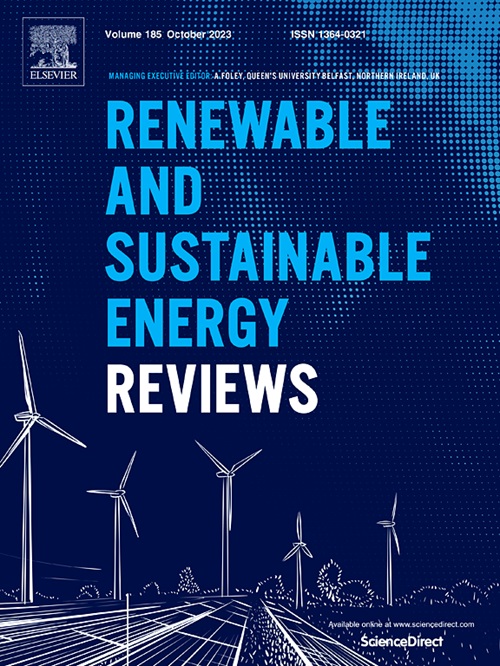对各种合作模式下的氢气市场动态进行战略分析
IF 16.3
1区 工程技术
Q1 ENERGY & FUELS
引用次数: 0
摘要
全球能源格局正在经历一场变革,人们越来越重视可持续的清洁能源。氢仍然是去碳化、能源储存和替代燃料的理想候选者。本研究通过评估三种合作方案:基于市场的定价、合作整合和协调决策,探索氢气定价和需求动态的前景。研究结合了对价格敏感的需求、环境友好型生产方法和市场渗透效应,为最大限度地提高氢能产业的市场份额、盈利能力和可持续性提供了见解。本研究通过分析这些结构及其在通过平衡经济可行性和环境目标快速过渡到清洁氢气生产中的作用,有助于理解合作的复杂性。研究结果表明,合作一体化战略对可持续增长最为有效,可将绿色氢气的市场份额提高到 19.06%,并凸显了具有环保意识的氢气生产的潜力。研究还表明,协调决策方法通过合作关税合同提高了盈利能力,同时兼顾了经济可行性和环境目标。这项研究还强调了战略定价机制、政策调整和氢气枢纽在实现氢能行业可持续增长中的作用。通过强调不确定性和潜在障碍,本研究为政策制定者和行业参与者提供了可操作的指导,以塑造一个具有竞争力和可持续发展的能源市场。本文章由计算机程序翻译,如有差异,请以英文原文为准。
Strategic analysis of hydrogen market dynamics across collaboration models
The global energy landscape is experiencing a transformative shift, with an increasing emphasis on sustainable and clean energy sources. Hydrogen remains a promising candidate for decarbonization, energy storage, and as an alternative fuel. This study explores the landscape of hydrogen pricing and demand dynamics by evaluating three collaboration scenarios: market-based pricing, cooperative integration, and coordinated decision-making. It incorporates price-sensitive demand, environmentally friendly production methods, and market penetration effects, to provide insights into maximizing market share, profitability, and sustainability within the hydrogen industry. This study contributes to understanding the complexities of collaboration by analyzing those structures and their role in a fast transition to clean hydrogen production by balancing economic viability and environmental goals. The findings reveal that the cooperative integration strategy is the most effective for sustainable growth, increasing green hydrogen's market share to 19.06 % and highlighting the potential for environmentally conscious hydrogen production. They also suggest that the coordinated decision-making approach enhances profitability through collaborative tariff contracts while balancing economic viability and environmental goals. This study also underscores the importance of strategic pricing mechanisms, policy alignment, and the role of hydrogen hubs in achieving sustainable growth in the hydrogen sector. By highlighting the uncertainties and potential barriers, this research offers actionable guidance for policymakers and industry players in shaping a competitive and sustainable energy marketplace.
求助全文
通过发布文献求助,成功后即可免费获取论文全文。
去求助
来源期刊

Renewable and Sustainable Energy Reviews
工程技术-能源与燃料
CiteScore
31.20
自引率
5.70%
发文量
1055
审稿时长
62 days
期刊介绍:
The mission of Renewable and Sustainable Energy Reviews is to disseminate the most compelling and pertinent critical insights in renewable and sustainable energy, fostering collaboration among the research community, private sector, and policy and decision makers. The journal aims to exchange challenges, solutions, innovative concepts, and technologies, contributing to sustainable development, the transition to a low-carbon future, and the attainment of emissions targets outlined by the United Nations Framework Convention on Climate Change.
Renewable and Sustainable Energy Reviews publishes a diverse range of content, including review papers, original research, case studies, and analyses of new technologies, all featuring a substantial review component such as critique, comparison, or analysis. Introducing a distinctive paper type, Expert Insights, the journal presents commissioned mini-reviews authored by field leaders, addressing topics of significant interest. Case studies undergo consideration only if they showcase the work's applicability to other regions or contribute valuable insights to the broader field of renewable and sustainable energy. Notably, a bibliographic or literature review lacking critical analysis is deemed unsuitable for publication.
 求助内容:
求助内容: 应助结果提醒方式:
应助结果提醒方式:


